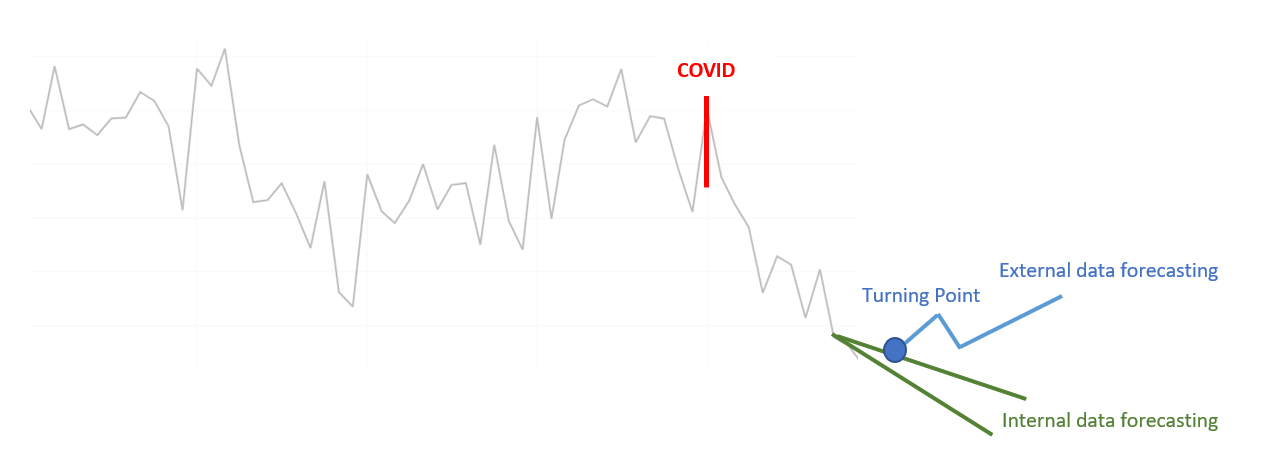
COVID-19 has impacted the demand for most companies. For some the situation has already been normalized, some have experienced a pent up of demand during the lockdowns, which is now catching-up. For others, demand remains significantly below 2019 levels. We all share the same experience: COVID made forecasting harder than it already was... But do not be afraid, there is something that we can do about it! Just hear us out and get that forecast back on track!
Internal data forecasting is simply believing that historical demand is representative for the future. For the statisticians among us: extrapolating trend and seasonality of the timeseries. First remark: will this estimated trend be representative now COVID hit us? What can we do to make sure that we have good quality input for our forecasting models?
Well, we can do 3 things:
More than ever, it is important to look beyond the company walls and to enrich the baseline forecasting process with external information. External information can originate from different sources: customer forecast, questionnaires, macro-economic indicators, …
Allow me to go a bit more in detail on macro-economic indicators. Find indicators that are correlated or leading with the market or demand pattern. Those leading indicators will capturing turning points that internal methods would simply have extrapolated. Let us explain the use of internal and external forecasts with a real time example.

Internal data forecasting will extrapolate the negative trend caused by COVID. When adding external data insights, turning point detection becomes possible. In our example, the external indicator predicts a recovery in 3 months which is not yet visible in the demand pattern of the customers.
Why should we do both (internal and external)? Good question! External data makes it possible to forecast higher level trends, to detect turning points, to get strategic insights in the market. However, we should still be able to translate that higher level forecast into an operational (lower level) forecast. By combining internal and external data, this becomes possible!
Find out how you can improve your forecasting practices with external data in this free E-book! We show you how including external market data in your demand planning gives you better insights in which factors drive your market.
These Stories on Demand Planning